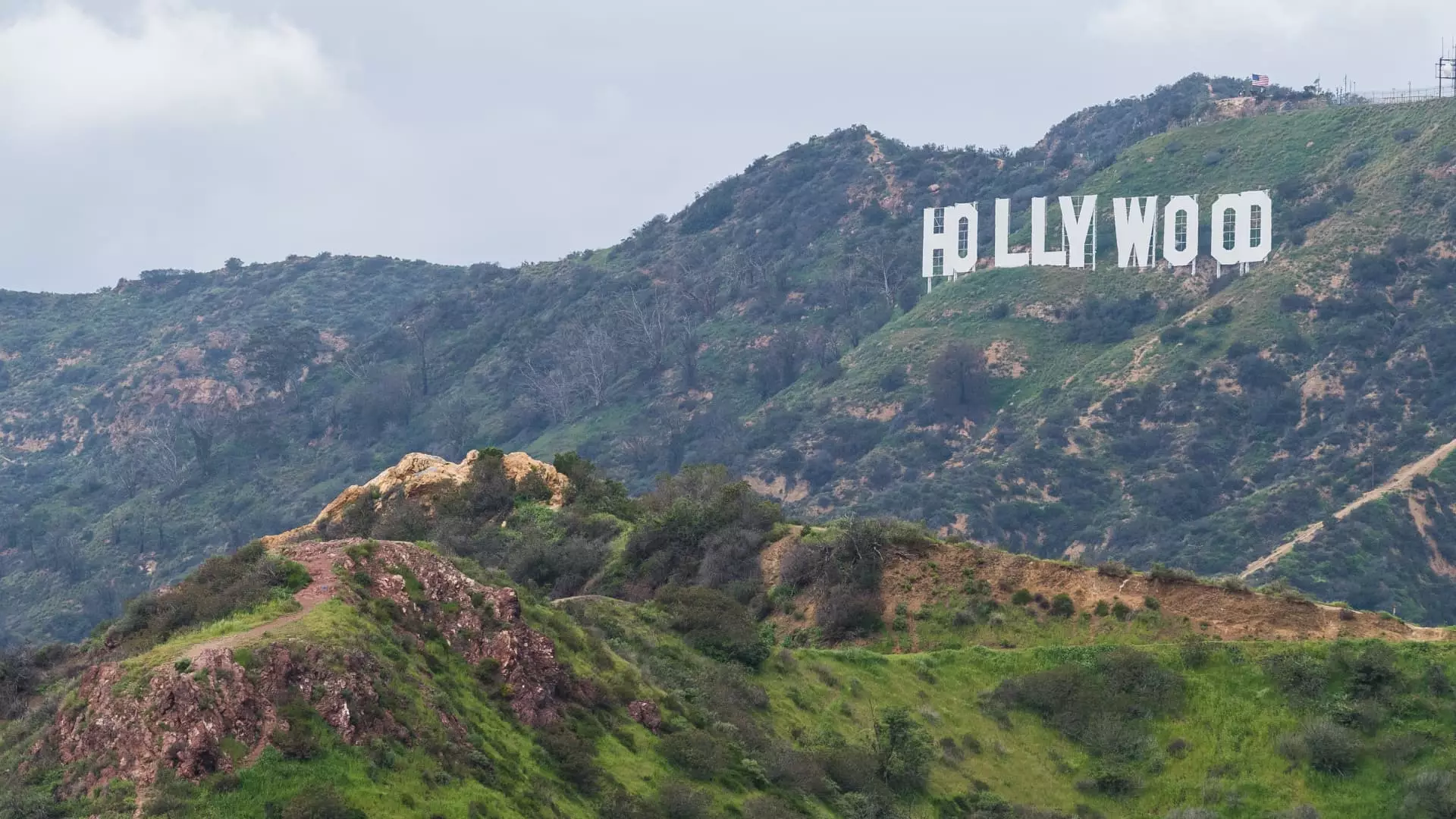President Donald Trump’s recent suggestion of imposing a whopping 100% tariff on films made overseas has sent shivers down the spine of Hollywood investors and the entertainment industry. The audacity of this proposal is astonishing, yet its implications are profound and fraught with uncertainty. Just the whisper of such a hefty levy caused shares in major studios and streaming services—Netflix, Disney, Paramount, and Warner Bros. Discovery—to dip significantly. The question arises: are we witnessing the beginning of a movement that could undo decades of interconnectedness in the global film industry?
The Logic Behind the Madness
Trump’s justification for the tariff centers around deeming foreign tax incentives as a “national security threat.” This reasoning is tenuous and raises eyebrows across the board. Is the cinematic universe truly a battlefield, or is this posturing simply a charade motivated by political gain? Historically, Hollywood has thrived on international collaborations that not only capture diverse narratives but also cater to a global audience. By labeling foreign contributions as a threat, Trump inadvertently risks stifling creativity and innovation that stems from collaboration.
The proposed tariffs would disrupt the existing production ecosystem, where many films, including blockbusters, are shot in enchanting locales worldwide. The charm and authenticity of films often derive from their settings—something that is irreplaceable and cannot be replicated within the virtual confines of a studio. Implementing crippling tariffs could very well hamstring the industry’s artistic freedom and thematic exploration.
Potential Fallout: A Global Fallout for Hollywood
Not only do tariffs jeopardize the creation of films shot on foreign soil, but they also raise important questions about the consequences on already existing international partnerships. Studio executives have long relied on global box office sales to balance the staggering costs of production—assets that could now be rendered useless. Take China, for instance; it has already started to distance itself from Hollywood productions. Trump’s policies, if fully realized, could lead to a domino effect where other nations follow suit in retaliation, further isolating U.S. cinema.
Moreover, the logistics of film production today cancer this tariff’s premise. Films are often edited and transported digitally, meaning the physical exchange of goods that tariffs traditionally target isn’t present in the same way it is for tangible products. Thus, it raises the rather crafty question of how these tariffs would even be implemented: would it involve taxing pre-release screenings of completed digital files or holding entire casts and crews accountable?
Impacts on American Jobs and Cultural Diversity
The impending doom extends beyond just the aisles of cinemas—it seeps into the very heart of American job markets interconnected with the entertainment industry. Shuttered doors to international filming locations would likely compel studios to reconsider where to allocate their resources, placing increased strain on domestic production capacities and potentially leading to job losses.
What’s more concerning is the marginalization of diverse storytelling that comes from international collaboration. By shunning international films via excessive tariffs, we risk dulling the artistic palette that shapes our culture and narratives. The craft of filmmaking is rooted in diverse influences and voices, blaring alarms that should resonate within the halls of power.
In essence, Trump’s film tariff proposal serves as a stark reminder of the potential repercussions looming on our cinematic horizon. As stakeholders in this industry, we must advocate for thoughtful and cohesive policies that foster creativity and collaboration, rather than feeding a cycle of isolationism that could irrevocably alter Hollywood for the worse.

